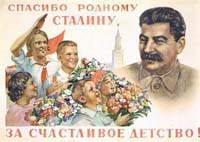
G Struve Veselaya Pesenka
In the beginning of April 1917 the Provisional Government had discovered to its surprise that Russian finances, already for some time in quite bad shape, were on the brink of complete collapse. In an attempt to mend the situation, and stir enthusiastic patriotism, the government loudly, announced the issuance of domestic Freedom Loan bonds. Rumors about the loan had began circulating as early as March and Minister of Finance Tereshchenko informed the press that there were already multi-million pledges from bankers to buy bonds, “mainly from the Jewish bankers, which is undoubtedly related to the abolition of religious and national restrictions.” Indeed, as soon as the loan was officially announced, names of large Jewish subscribers began appearing in newspapers, accompanied by prominent front-page appeals: “Jewish citizens!
Compos - Volchenko v.g. - veselaya pesenka o rodnom krae. KAROTUM EM,SIRUM EM,SPASUM EM - Tvoya veselaya ulybka. The PDGA is the professional association for ALL disc golfers and the source for disc golf courses, tournament results, and the official rules of disc golf.
Subscribe to the Freedom Loan!” and “Every Jew must have the Freedom Loan bonds!” In a single subscription drive in a Moscow synagogue 22 million rubles was collected. During the first two days, Jews in Tiflis subscribed to 1.5 million rubles of bonds; Jews in Minsk – to half a million in the first week; the Saratov community – to 800 thousand rubles of bonds. In Kiev, the heirs of Brodsky and Klara Ginzburg each spent one million. The Jews abroad came forward as well: Jacob Schiff, 1 million; Rothschild in London, 1 million; in Paris, on the initiative of Baron Ginzburg, Russian Jews participated actively and subscribed to severalmillion worth of bonds. At the same time, the Jewish Committee in Support for Freedom Loan was established and appealed to public.
However, the government was very disappointed with the overall result of the first month of the subscription. For encouragement, the lists of major subscribers (who purchased bonds on 25 thousand rubles or more) were published several times: in the beginning of May, in the beginning of June and in the end of July.

“The rich who did not subscribe” were shamed. What is most striking is not the sheer number of Jewish names on the lists (assimilated Russian-Germans with their precarious situation during the Russo-German War were in the second place among bond-holders) but the near absence of the top Russian bourgeoisie, apart from a handful of prominent Moscow entrepreneurs. Komik tintin bahasa indonesia lengkap sudah ditandai.
In politics, “left and center parties burgeoned and many Jews had became politically active.” From the very first days after the February Revolution, central newspapers published an enormous number of announcements about private meetings, assemblies and sessions of various Jewish parties, initially mostly the Bund, but later Poale Zion, Zionists, Socialist Zionists, Territorialist Zionists, and the Socialist Jewish Workers’ Party (SJWP). By March 7 we already read about an oncoming assembly of the All-Russian Jewish Congress – finally, the pre-revolutionary idea of Dubnov had become widely accepted.
However, “because of sharp differences between Zionists and Bundists,” the Congress did not materialize in 1917 (nor did it occur in 1918 either “because of the Civil War and antagonism of Bolshevik authorities”). “In Petrograd, Jewish People’s Group was re-established with M. Vinaver at the helm.” They were liberals, not socialists; initially, they hoped to establish an alliance with Jewish socialists.